Students better themselves through Thangka painting skills
-- Jianyang Lezhu Rinpoche exclusive interview with BON Cloud --
A graduation ceremony for the first class of Jonang Intangible Cultural Heritage Center in Rangtang, Sichuan province was held at the Jinze Art Center, Shanghai on December 17. Sixty students from Rangtang who studied for eight years are preparing to start careers as artists skilled in the challenging techniques of Thangka painting.
Painters from the heritage center may appear young and inexperienced, but over the past few years their works have been exhibited in a number of influential academic and art exchange programs, including the first religious culture art exhibition at Peking University, Liu Haisu Art Museum in Shanghai, Boao Forum for Asia conference, Xixi Art Gallery of Zhejiang University, Han and Tibetan Buddhism seminar at Renmin University, Religion and Art Forum at Tsinghua University, China Thangka art forum, and the International Intangible Cultural Festival in Chengdu.
Scholars and artists have praised the young artists for their solid foundation in basic skills and the unique ancient charm of the style. They have also aroused interest from the public.
The BON Cloud international production team had the opportunity for an exclusive interview with Jianyang Lezhu Rinpoche, who has served at various times as the founder of Jonang Intangible Cultural Heritage Center, vice-chairman of the CPPCC in Jonang county, national representative of Chinese intangible cultural heritage, Abbot of Zangwa Monastery, and student mentor.
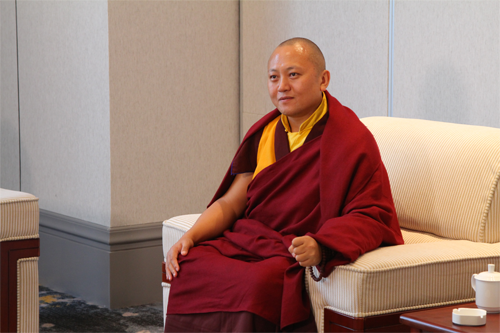
Jianyang Lezhu Rinpoche exclusive interview with BON Cloud
BON:
Jianyang Lezhu Rinpoche, what was the original reason for founding the Jonang Intangible Cultural Heritage Center in 2010?
Jianyang Lezhu Rinpoche:
There are many young people in Rangtang, some of them now farmers or herdsmen, who want a chance to study again. That’s why we set up the heritage center.
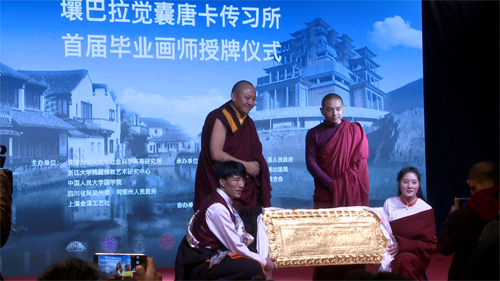
Jianyang Lezhu Rinpoche and graduate representatives
BON:
What has been the change in student numbers since the center opened?
Jianyang Lezhu Rinpoche:
We started out with a few dozen students but now have about six or seven hundred students. Because of our accommodation limits we decided not to enroll any more.
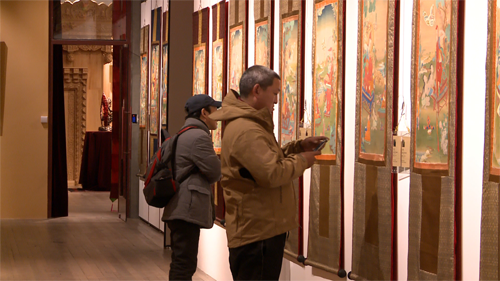
Graduation Exhibition of Thangka paintings
BON:
Most of the students come families who are herdsman, and some of the children were very much used to the fields and mountains rather than classrooms and books. Things are very different now. What do you think of these changes?
Jianyang Lezhu Rinpoche:
This group of people really grabs my attention. They are herdsmen who live in tents on the isolated mountains. They have very little chance for self expression, or to make changes in their lives. But our culture is different. We tell them they are capable of sharing ideas, and can be like a bird bravely spreading its wings. We want to show them the possibilities of life, Buddhism's interpretation of life, how to get to know and understand yourself, what society is, how external things affect us and how we receive information. We should focus on our knowledge systems, thoughts, emotions and experiences. If we pay close attention to every aspect of life, then our all round ability will improve, which will be a qualitative change. Although the students still have little contact with society, they are powerful and energetic. When I heard in a documentary that they “paint using life”, I thought this was a kind of courage and showed the spirit of altruism, which is worth our respect. This is not something I have given them, it originates from their hearts. It is their own inspiration and discovery of life itself.
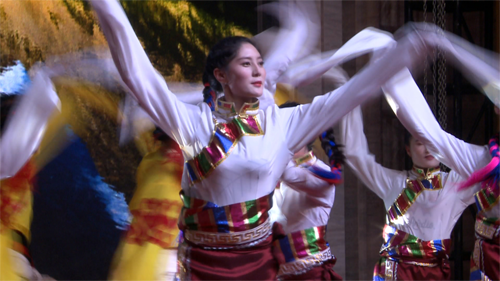
Picture: Students’dancing at the graduation ceremony
BON:
What kind of teaching methods do you use to help students know themselves through Thangka painting and to cultivate strong spiritual power?
Jianyang Lezhu Rinpoche:
They have a positive way of thinking about themselves, and we share a lot of communication, not only in class, but also in outside life. Sometimes, we play a game called "shua bazi" to let the mind open through song and dance.
And, in Thangka painting, as you mentioned, before you draw a line, you let your heart communicate with your hands. It takes time to let your hand execute your ideas and to become familiar with the use of tools. Finally, you can realize the incongruity and contradiction between your mind and body. When you try to break through these contradictions, you find different emotions, including negative ones, which hinder the flow of the lines. Then you will have a deeper understanding of your mind and know that you can draw lines smoothly only by maintaining a purity of the heart. In this way, you can understand yourself better. When I can’t express what I want in painting and become annoyed, I learn how I can try to obtain the possibilities of both truth and beauty.
Once, a student told me he was feeling bad because his father was ill, but at another times, he didn’t feel so bad. We have been together for 7 to 8 years, and he would go through these different moods. Our students paint at least seven or eight hours a day, and the diligent students paint over ten hours a day. Through painting, this student can feel better with his own body and mind entering into a spiritual world. He knows what kind of state is best, what kind of character he can maintain. The students’ knowledge does not come from the outside, but inside.
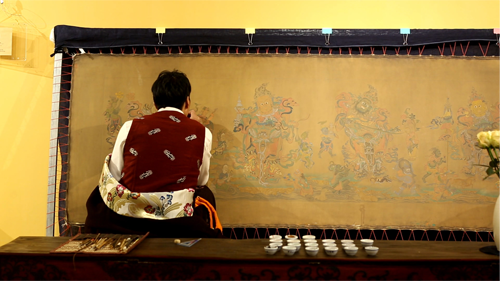
A graduate paints at the graduation exhibition
BON:
If students are not having a good time in their personal lives, will you talk to them or use other methods?
Jianyang Lezhu Rinpoche:
I don’t consider Thangka painting as a craft or skill, I prefer to think of it as a way to understand our own body and mind. Through Thangka painting , we can enter into our own inner self and express our body and mind without barriers, which is the significance and value of the Thangka.
We have all kinds of ways, as I mentioned earlier, including song and dance. Some of the students say “Last time we were drinking tea, I suddenly understood what you meant.” You may think someone is talented through the way they draw, but it’s not talent. Once the mind has opened, their painting will become fluent and beautiful. The student will know how to express himself, what is vulgar, what is spiritual and what are different emotions. He will have a subtle appreciation of every line because he can communicate with his mind.
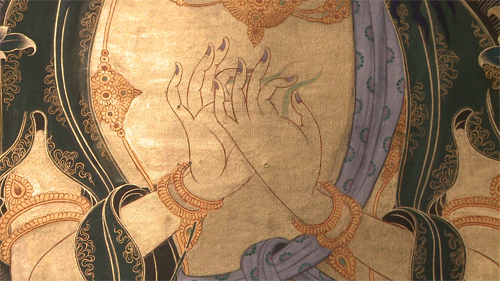
Part of a Thangka painting at the graduation exhibition
BON:
Do you have any thoughts on how to pass the tradition of Thangka painting on in a creative way?
Jianyang Lezhu Rinpoche:
When the artist's mind is not jaded, in his eyes everything is knowledge, so innovation is inevitable. He knows his limits, but doesn't limit himself. He also knows that being a herdsman in the mountains, his understanding is formed under the influence of the environment and culture. He knows what will happen when his mind is free from influence, and how to accurately understand any culture with that free mind. The students pay attention to art from the Song Dynasty, contemporary art and western art. They can interpret and expresses things accurately, for their minds are not constrained by technology and remain unbiased.
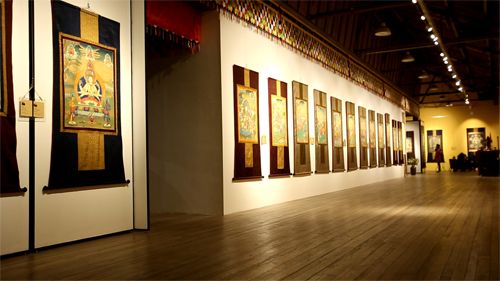
Thangka Graduation Exhibition
BON:
As you mentioned, the students learn about art from ancient Chinese, contemporary and western styles. How does this affect their future creations?
Jianyang Lezhu Rinpoche:
Whether to innovate up to them. For example, a student might want to express a Song Dynasty painting today. If you gave him a brush for oil painting, he could do that. But that's not what he wants. He knows his personal position, his core values and the purity of life based on his deep analysis. He will not think of a partial concept and a finite emotion as his only identity, so he can do everything through his own thoughts.
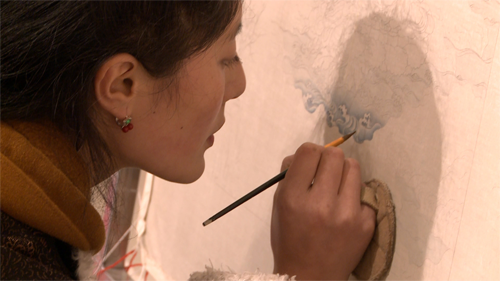
Between the Brush
BON:
If one day the students have the opportunity to reach the international stage and spread Thangka painting and their stories to the world, what would be your expectations?
Jianyang Lezhu Rinpoche:
We are based on the tradition of our own nationality. In the continuation of cultural inheritance, every student inherits some of the most valuable qualities in his life. They are born with faith and a yearning for truth. On the basis of this, they are able to start their own lives and achieve good results through a combination of faith and art. So their morality and culture is very significant.
Regarding the nature of the mind, no matter where you come from it is the same. How do we interpret our lives and recognize our own culture? What kind of culture influences us? Will the influence be one sidedness? Can we know whether it is external or internal to our own life? I want every student to understand the condition of a pure mind that has not been affected, which can transcend time and space and become greater than just "international".
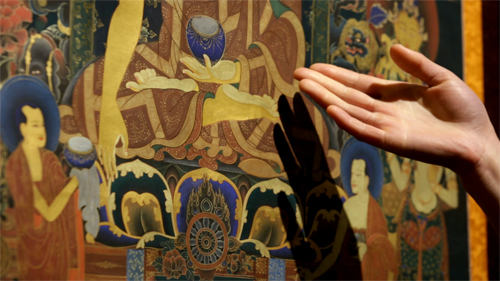
Thangka Graduation Exhibition
BON:
Do you mean you want students to know themselves first and then influence others gradually?
Jianyang Lezhu Rinpoche:
In fact, we need to know ourselves, life and the universe. First of all, you need to open your heart, maintain harmony between your emotions and mind. If not, you will be out of sorts. First you need to know what kind of situation and state you are in, then through your own culture, art and the integration between body and mind begin to understand yourself. In this case, the understanding of ourselves is empirical, practical and harmonious, so wherever we are, we can always see the world with a pure heart.
I think international cultural exchanges make sense. Both east and west have their own theoretical system for understanding life, as well as a view and attitude of life in the universe. If we interpret other people using our own viewpoint only, it's hard to communicate with then. We can understand what other people say, but others also have to pay attention to what we're talking about.
We have had our own position, our own traditional culture for a thousand years. We are talking about the quiet mind of self-knowledge, a field of “no difference between mortal beings”, the fate of mankind and the potential of humans. So there are lessons to be learned in this regard, for potential is something that everyone can reach and are in fact born with. This sense of gain and self-discovery is the real source of happiness.
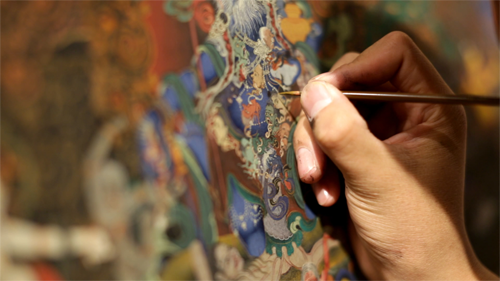
Adding Colors
BON Cloud is producing a mini documentary about a female Thangka painter Seqinglamu who has graduated from the Jonang Intangible Cultural Heritage Center. The mini documentary tells the story of her eight years learning Thangka art and finally becoming a real painter. The mini documentary will be distributed on various global media platforms.

